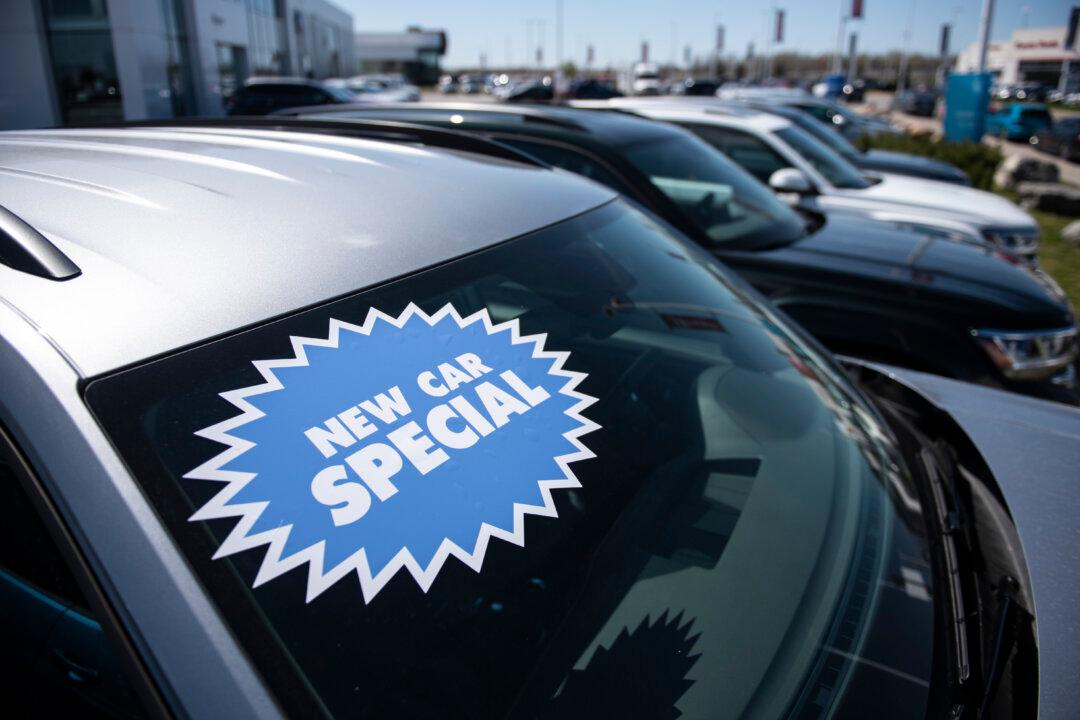For the first time in years, car shoppers are having an easier time finding a deal as the auto industry bounces back from supply chain woes—and experts say the outlook could get even better.
Sticker prices at dealerships have started to come down and affordability is improving, said Daniel Ross, senior manager of industry insights with Canadian Black Book.
“The new car market is normalizing faster than the used car market,” he said. “You have the inventory, you have the incentives depending on where you’re shopping and if you were a new car shopper from the beginning, it’s the best situation you’ve had in a long time.”
Inventory of new cars has built up across the country as prices for newer models climbed and consumers pulled back on big purchases amid high inflation and rising interest rates. Now, manufacturers and dealerships have launched incentives and rebates as they look to clear that supply.
On new cars, dealerships can offer internal financing from manufacturers and control the rates independently from bank rates, said Sam Fiorani, vice-president of global vehicle forecasting at AutoForecast Solutions.
“Instead of offering rebates, they lower interest rates which make deals better for the consumer.”
Homeowners are watching the Bank of Canada’s every move as they hope for lower borrowing rates, but a vehicle purchase works somewhat differently, said Shari Prymak, a senior consultant at non-profit Car Help Canada. When financing through a dealership, the interest rate depends on the given make or model.
“The rates that the manufacturer sets are mainly tied to the vehicle availability,” he said.
“If the vehicles have a very good supply, they'll incentivize the interest rates and bring down the rates,” Mr. Prymak said. “But if the vehicle doesn’t have any supply, if it has a long waiting period, because it’s in short supply, the rates won’t be incentivized.”
Manufacturer financing rates on new cars could be about five to seven percent without incentives, which can be lower than rates on used cars but still higher than pre-pandemic levels. The used car market, on the other hand, can see rate changes more in line with central bank decisions but the prices continue to remain high, Mr. Prymak added.
As vehicle availability continues to improve, more incentives and offers are coming to the table for customers—bringing more negotiating ability, he added.
But the market isn’t yet fully corrected and it could be another year before it normalizes.
A report by TD Bank published in May shows inventory levels will continue to rise but demand could be nuanced as economic headwinds, especially in the housing sector, could influence sales as more households save to either buy a home or keep up with their mortgage payments. The bank estimates auto sales this year will grow 9.6 percent and reach pre-pandemic levels in 2025.
Mr. Prymak suggested it is ideal to wait another six months for a better deal on new cars—especially for vehicles with tighter supply and longer wait periods which will not have good incentives from manufacturers.
Asian brands building hybrid vehicles such as Toyota, Honda and Hyundai still have limited supply in Canada so there will be fewer incentives.
Many would-be buyers held off on vehicle purchases over the past few years—spending instead on repairs and maintenance to keep their aging vehicles alive. But for consumers who can’t hold off anymore, Mr. Prymak suggested going for a new car that has ample supply.
North American automakers including Ford, General Motors and Stellantis have larger inventory and may have better deals and incentives for customers, Mr. Prymak said. Luxury European brands, including Mercedes, BMW and Audi could also be good options for discounts.
Among widely seen offers on North American brands are cash incentives on certain vehicle models, going as deep as 15 percent on market retail prices. Discounts on lease rates are also growing. Meanwhile, negotiating expenses such as warranty on rust protection or theft protection products can save thousands of dollars.
Mr. Prymak suggested researching vehicle models, shopping around for the best quote from a dealership ahead of time and asking for an itemized breakdown of the quote to make sure the shopper isn’t paying for additional products.
“Don’t be afraid to negotiate with them to get a better deal because supply is improving, buyer’s negotiating ability is starting to slowly come back,” he said.
“Take advantage of that.”
The same idea applies when shopping for the best interest rate. For new vehicles, manufacturers often have lower rates than the bank rate or a line of credit. But for used cars, shopping around is integral to finding the best bank or credit option.
While the new vehicle market recovers faster overall, Mr. Ross said it has a long way to go and remains mixed at best.
“It’s a better scenario than it was—but we were coming from a very poor scenario,” Mr. Ross said of the auto market.
“If you’re looking for my car advice, I would say don’t shop yet if you don’t have to.”







